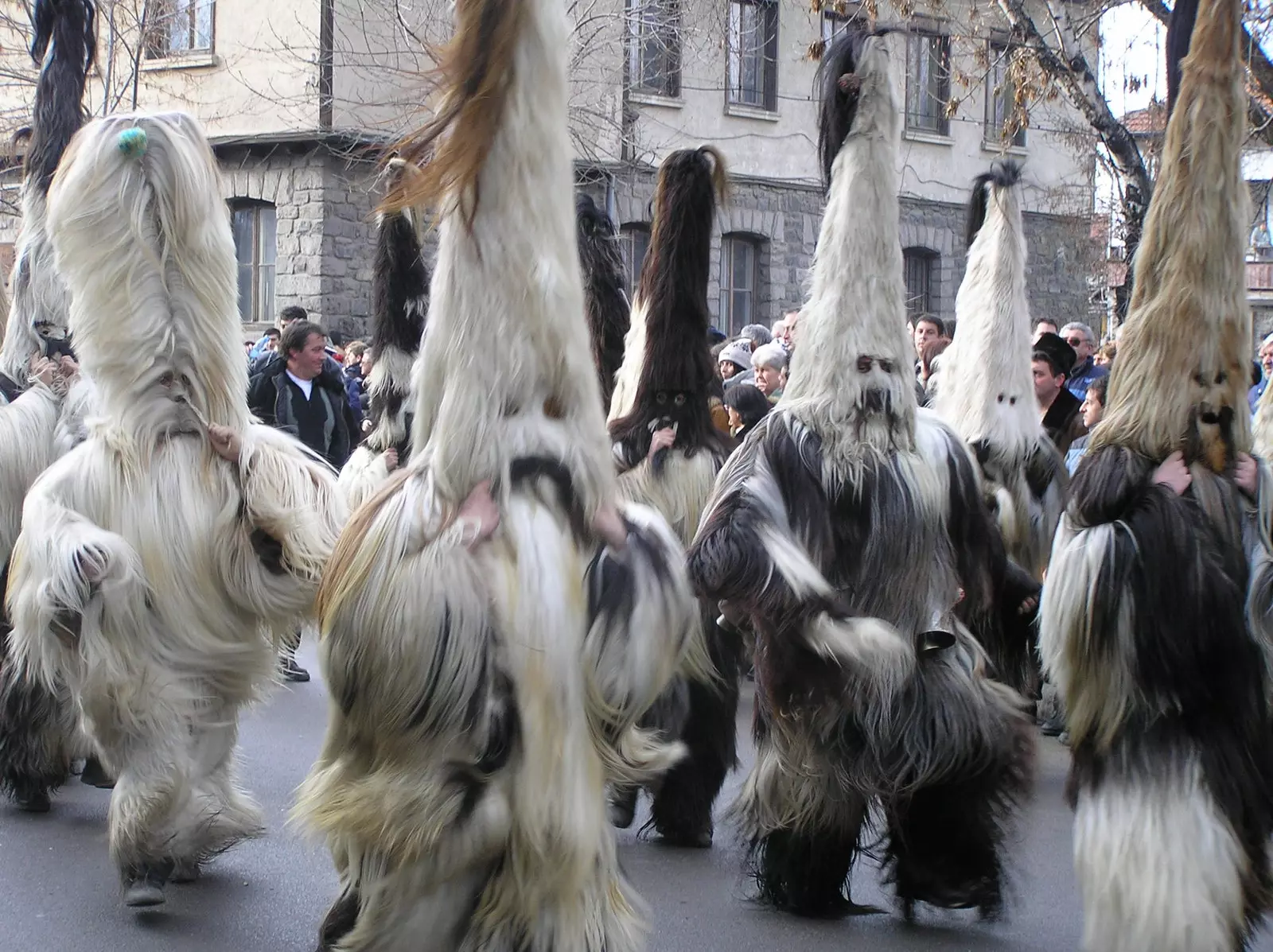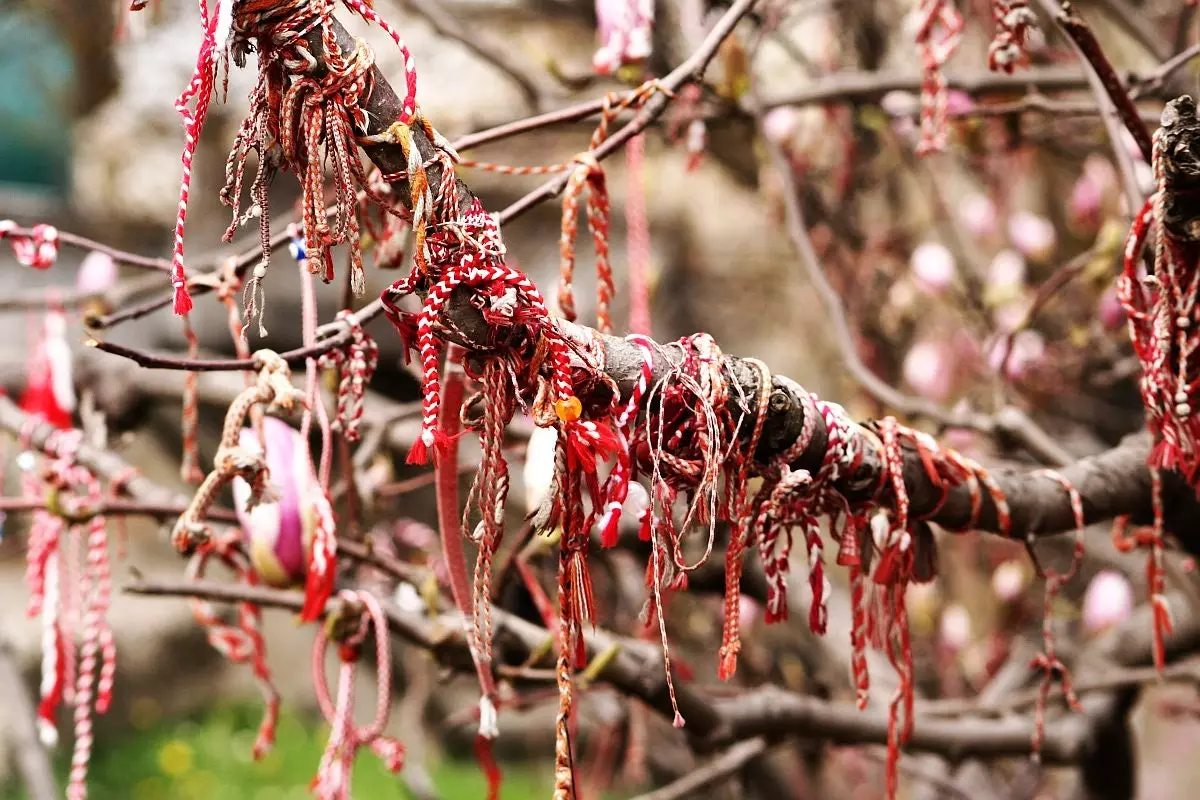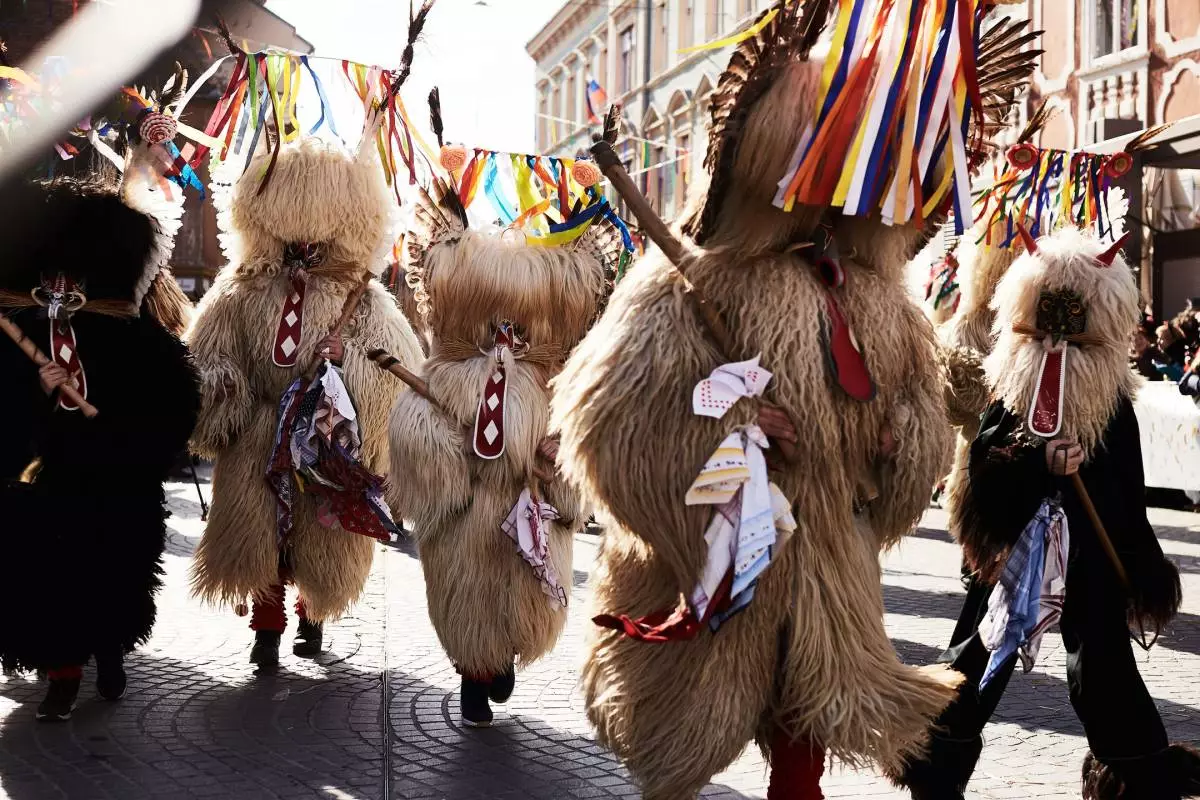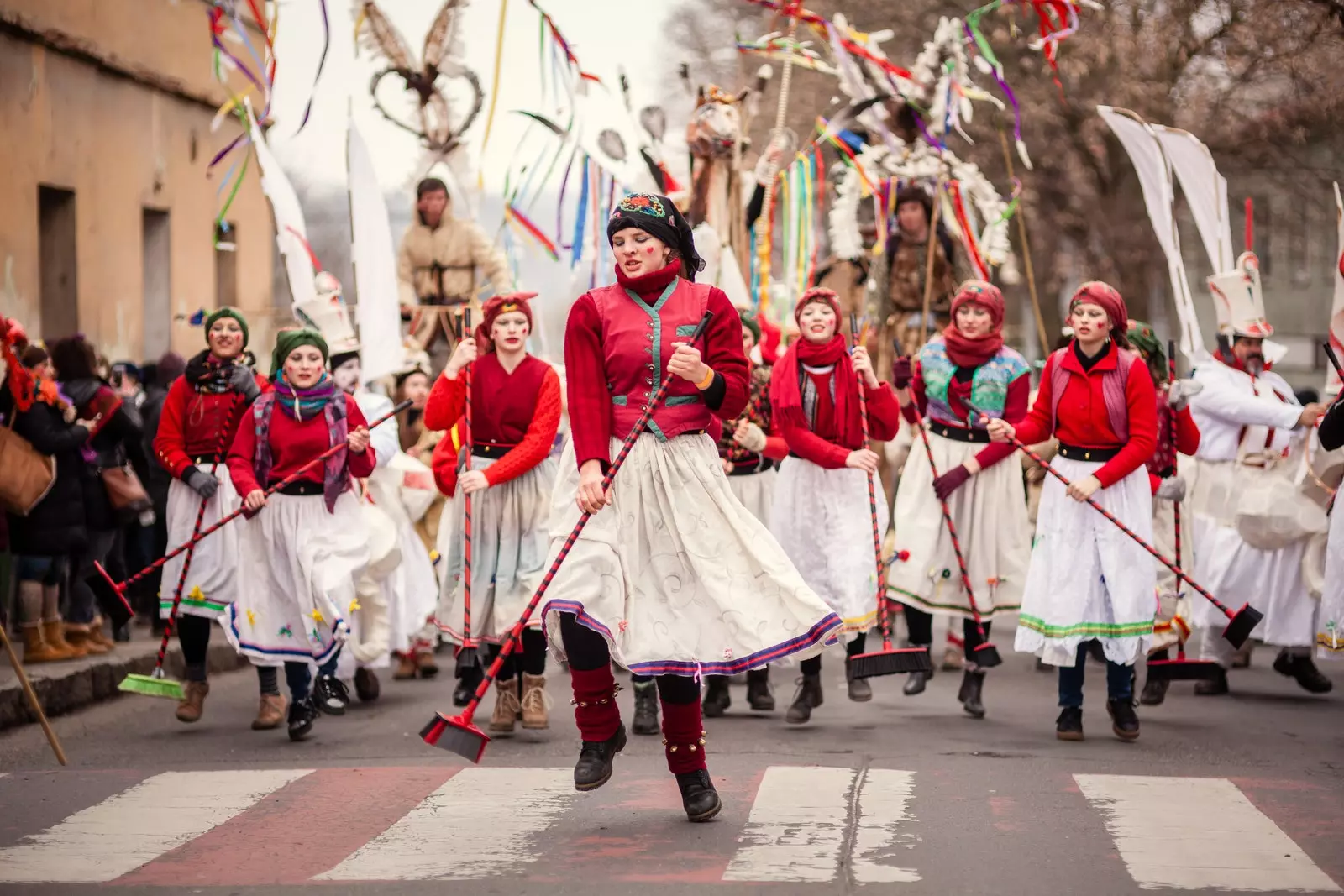February in Sofia. If the teeth don't chatter as damned by a temperature of 15 degrees below zero, then it will be the ankles that wobble in the mix of melted ice and mud that smears the ground. In the parks, butts and dog droppings are uncovered the snow cryogenized during the previous months. The darkness, whether due to the clouds or the scarce seven hours of sunshine, is almost permanent. Some humans in need of vitamin D take refuge in their houses, like vampires who fear the morning.
Although distant and with doubts, spring is approaching little by little. Different traditions receive it dyed red and white from January to these early March.

Kukeri, Bulgaria.
KUKERI
Since the new year and also before Lent, the Kukeri appear in different towns to drive away evil spirits and ask for help from the benign. That's what the creatures are called, usually in the form of animals, bells on the waist and elaborate masks, which the local inhabitants dress up to liven up the winter.
In its international festival, the town of Pernik brings together Kukeri from all over the Balkans, who stage small plays and comparsas. The icing comes with a gastronomic festival most peculiar.

Baba Marta ribbons in Bulgaria.
BABA MARTA
However, these beings care little about the change of season, which is symbolized by the martenitsi (not to be confused with the Russian maslenitsa), some small decorations in red and white, almost always in the form of a bracelet, symbolizing the rebirth of nature. The most striking thing is the scale reached by this custom, since the towns and cities are filled with stalls in which to acquire these amulets, which the Bulgarians s and give each other on March 1 , known as the day of Baba Marta (grandmother of March).
Over the next few weeks, everyone wears these bracelets until the first stork or swallow appears. So, according to tradition, bracelets are hung from birch trees that begin to bloom. This is so to such an extent that the branches of trees in the busiest sophist streets yield to the weight of white and red, as with an artificial bloom. Who removes them throughout the year? Ask the Kukeri.
Like the Kukeri and many other Balkan traditions, Baba Marta is celebrated in a similar way in areas of Greece, Macedonia, Serbia, Romania, Albania, Moldova, Turkey and even Cyprus. It is so widespread and rooted, that the UNESCO consider this custom as a Intangible Cultural Heritage of Humanity since 2017, recognizing the fundamental weight of non-formal education.

Kurentovanje, Slovenia.
KURENTOVANJE and ZVONCARI
We continue to the western part of the Balkans, where the two previous traditions merge into a carnival with which spring is received. Kurentovanje is one of the most popular events and ethnically significant in Slovenia . Every year and for ten days, the rite of fertility and the end of winter attracts more than 10,000 people to the small town of Ptuj.
His main figure Kurenti, is an eccentric god of hedonism, common in different Slavic mythologies. With his sheepskins and the tolling of his bells, they try to scare away the winter and, once again, believe in the arrival of spring.
And something similar happens in the neighbor Croatia, whose tradition of the Zvončari (bell ringers) has also been part of the Intangible Cultural Heritage of Humanity since 2009. Without even thinking about Lent, these creatures roam the Rijeka region making an unbearable noise and driven by the wine provided by neighbors and the public.

Masopust, Czech Republic.
MASOPUST and ZAPUSTI
To complete the picture, a small stopover in the Czech Republic and Poland, which is sadly talked about so much these days. In the latter, more than a tribute to spring, the Zapusti is a fond farewell to winter, which includes the Kulig, a ride in a horse-drawn sleigh through the still frozen prairies. Leftover Thursday closes with a banquet of pączki (filled donuts) and everything that is vetoed during Lent. Czech Masopust does not differ much, also concentrated in the gastronomic field and the use of traditional masks.
In any case, either with anthropomorphic creatures, clanging bells, wayward drunkenness or succulent banquets, the importance of the arrival of spring is demonstrated where winter is most persistent. Regardless of the pagan nature of most of these traditions, receiving the sun and the heat is still an act of faith.
